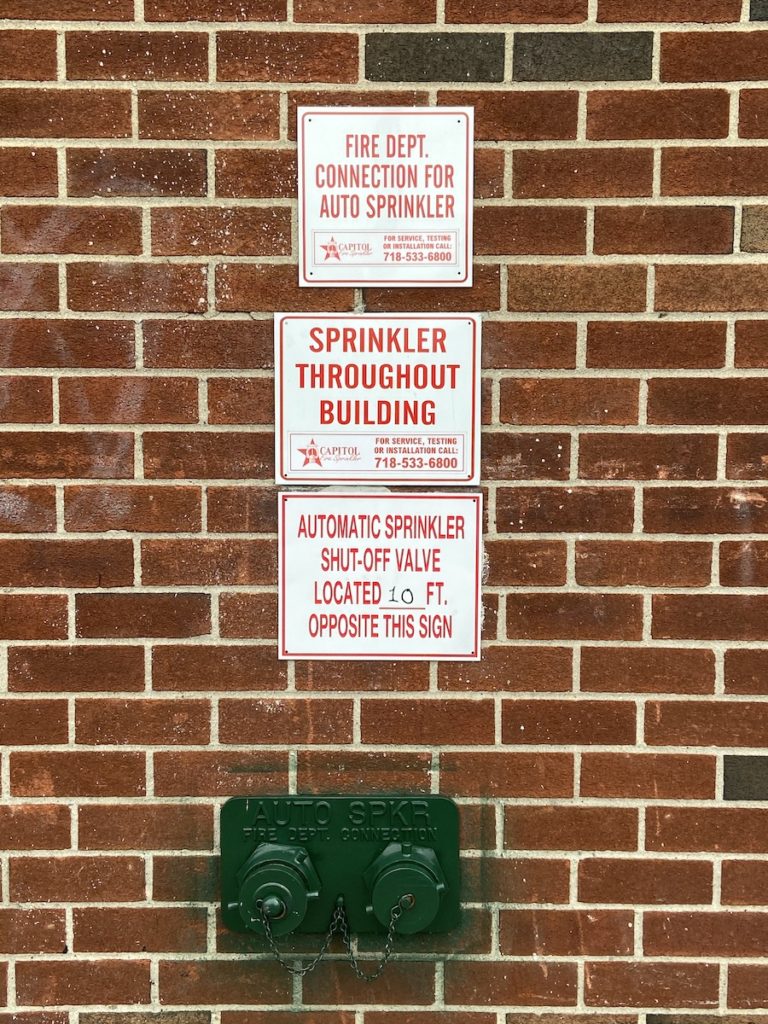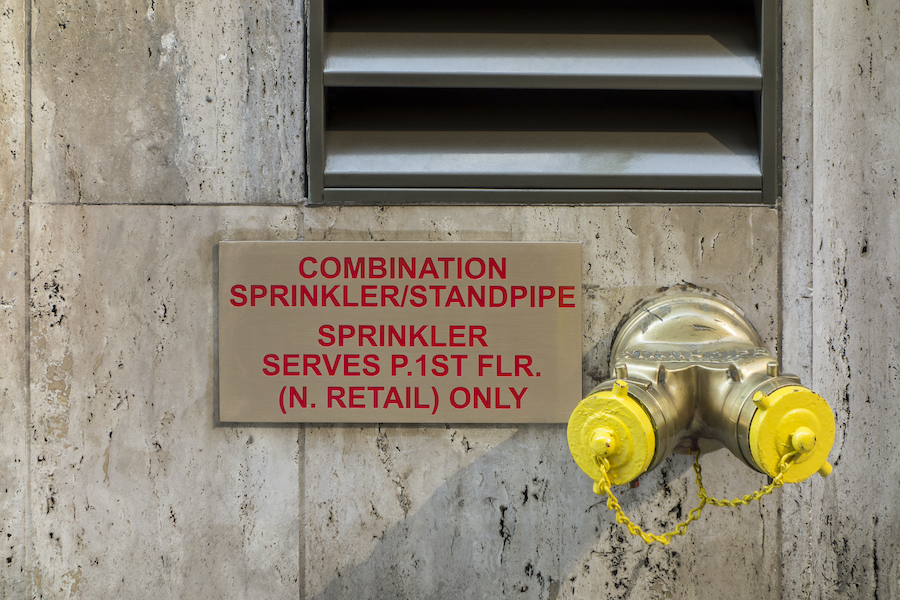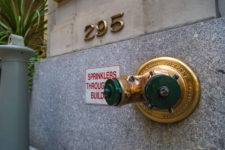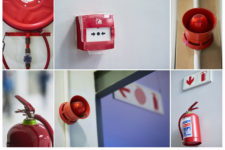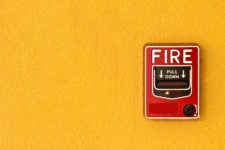The 5-year sprinkler test has always been one of the most complicated and complex processes for NYC management teams. That said, it’s critical to get right – not just to prevent needless fines, but to keep your tenants and buildings safe. We chatted with expert Jamie Levine, Vice President at Capitol Fire Sprinkler, about some common misconceptions and must-do best practices:
Due for a 5-Year FDNY Test? Here’s What You Need To Know:
The FDNY 5-year test is among one the most common violations we see as a fire sprinkler contractor. Every 5 years, the FDNY requires hydrostatic testing of the sprinkler/standpipe/combination Fire Department Connections, residential flow tests, and dry pipe valve trip tests (want to know some of the major differences between test types? Check them out at Capitol Fire Sprinkler’s website). The test is performed by a licensed fire sprinkler contractor and witnessed by the FDNY. The test can be scheduled with the FDNY only after you receive a notice or a summons.
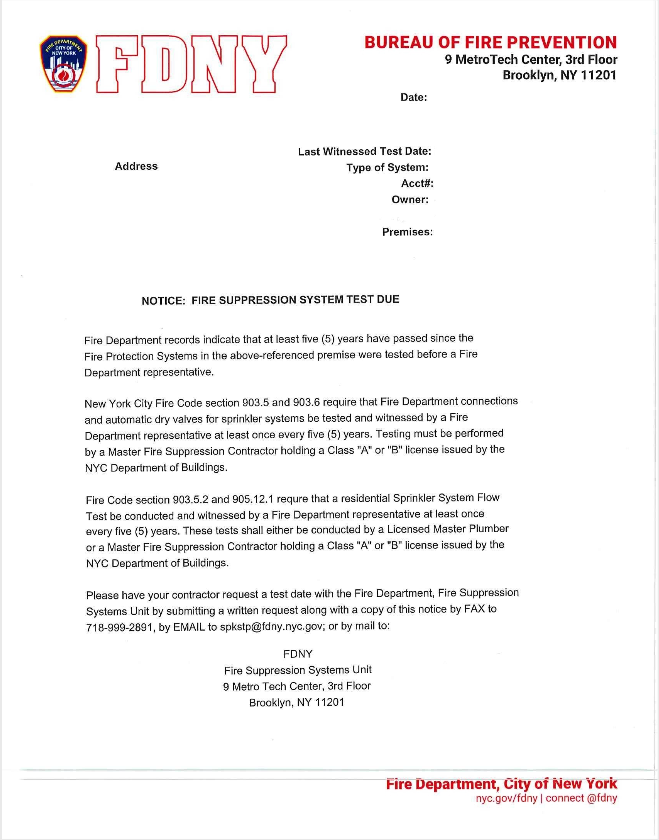
Here’s an example of a Notice sent to owners from the FDNY, alerting them to the need for a 5-Year test.
A Notice (like the image above) is first mailed to the building owner. Upon receipt, a copy of the Notice should be sent to a licensed fire sprinkler contractor who can schedule a test date with the FDNY. A Notice is not technically a violation or Summons, so there is no need to send cure documentation or fill out the FDNY’s Certificate of Corrections form.
If a test date is not scheduled in a timely manner after receiving a Notice, then the owner may receive a Summons.
SiteCompli Note: These Summonses (formerly known as Notices of Violation) are tied to hearings via OATH (formerly known as the ECB – Environmental Control Board). It’s also possible that owners will receive a Summons without seeing a Notice first – more on that below.
Unlike a Notice, a Summons will have a compliance date and hearing date. If a Summons is issued, a copy should be sent to a licensed fire sprinkler contractor to schedule the test date with the FDNY. The scheduled test date, along with additional relevant information provided by the contractor, will serve as proof of compliance. Proof of compliance and a completed Certificate of Corrections form should be sent to the FDNY before the compliance date to avoid attending a hearing and/or fine.
With that said, a repeat Summons or violation where the compliance date has passed will require attendance in court and may incur fines.
SiteCompli Note #2 – As opposed to Notices, you’ll see these FDNY Summonses in your account under FDNY > Notices of Violation. You’ll also have a record for each individual violation that appears, giving you more detail on the type of test the violation was issued for.
What’s the most important thing for owners/managers to be aware of when it comes to 5-year test violations?
It is important to understand that you cannot prevent this type of violation by trying to schedule a 5 year test with the FDNY before receiving a Notice or Summons. You can only schedule it once a Notice or Summons is issued.
A second important concept is that the test date (along with other relevant information from the FDNY and licensed fire sprinkler contractor) is sufficient to cure a Summons. The actual test likely won’t be performed until after the compliance date specified on the Summons. In fact, the test date is typically scheduled several months after it is requested with the FDNY. This is OK as long as the cure documentation is received by the FDNY before the compliance date.
One last tip on this topic – it may take up to 7 business days for the FDNY to confirm a test date. Therefore, it’s important to take action immediately upon receipt of a Notice or Summons.
There’s another local law regarding sprinklers that has seen recent activity – Local Law 26. Is NYC ramping up enforcement of this rule, originally due in 2019?
Our clients are receiving violations citing Local Law 26. LL26 requires the retroactive installation of fire sprinklers in existing office buildings that are over 100 feet in height . Enacted in 2004, LL26 allowed building owners 15 years to comply. Failure to comply with LL26 can result in fines and/or court appearances. More importantly, noncompliance can mean major liability to a building owner in the event of a fire. If Local Law 26 applies to your building, we can walk you through the process and help you take the next steps towards compliance.
Thanks to Jamie and her team for taking the time to walk us through these questions! If you have more questions for Jamie, visit Capitol Fire Sprinkler’s website here.
